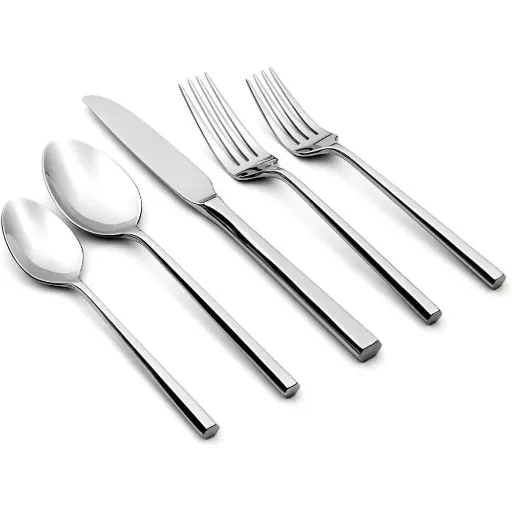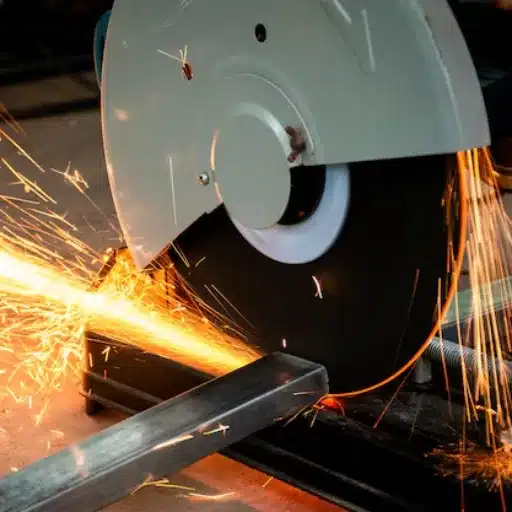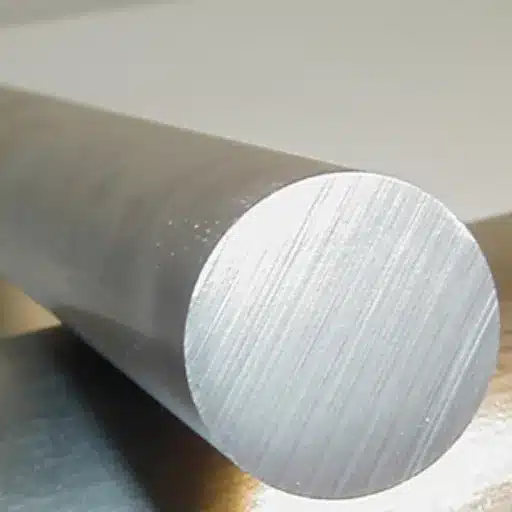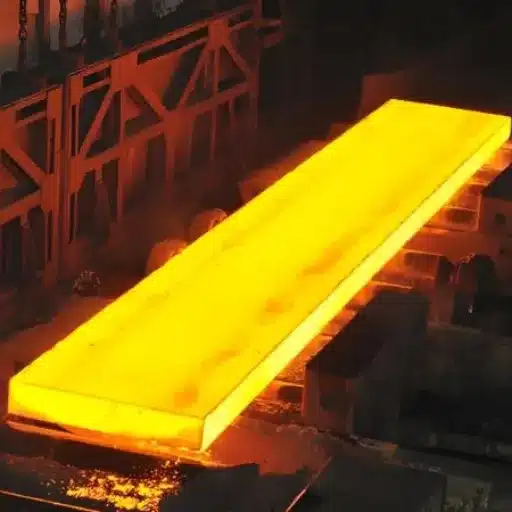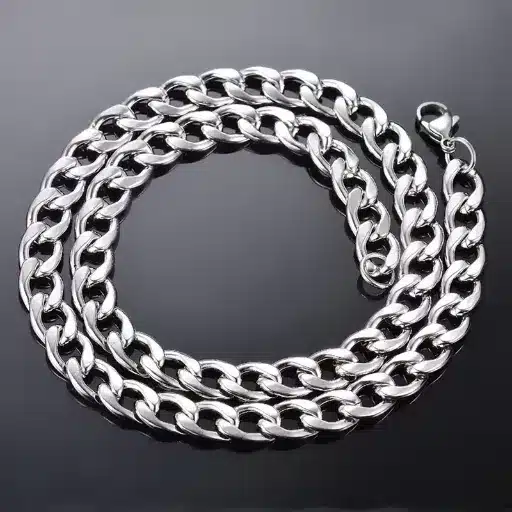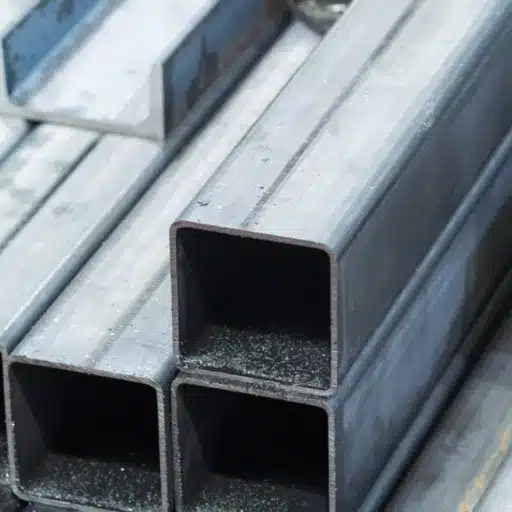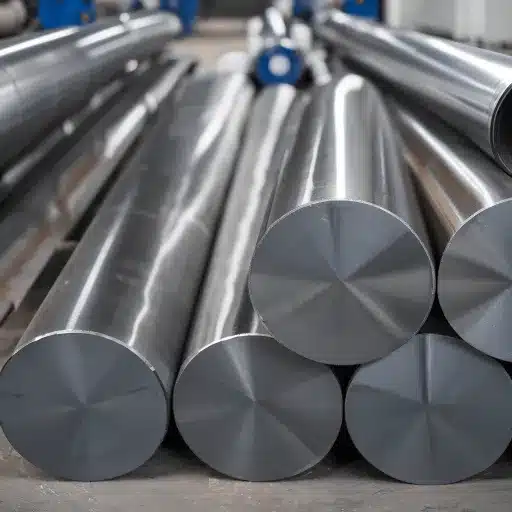Stainless steel has become a necessity in every kitchen worldwide, due to its long-lasting quality, anti-corrosive properties, and sophisticated, classic look. Nevertheless, there is stainless steel of different grades and quality all around, and knowing the distinctions may lead to the perfect option for your cookware. This guide thoroughly investigates the various grades of stainless steel and concentrates on the two typical grades, 18/8 and 18/10, as well as their influence on quality and performance. If you are an experienced chef or a very enthusiastic home cook, this article will equip you with the basic insights for making the right choices when it comes to cookware. Prepare yourself to reveal the mysteries of stainless steel and find out which type is the best fit for your cooking adventures.
Understanding Stainless Steel
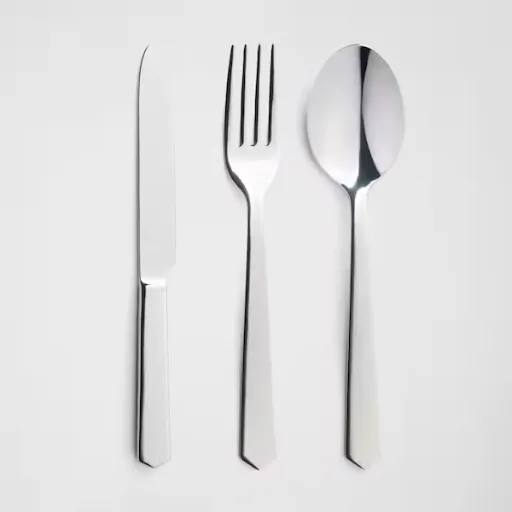
The stainless steel grades, such as 18/8 and 18/10, indicate the chromium and nickel contents in the steel, being 18% for chromium and 8% or 10% for nickel, respectively. The higher nickel content in 18/10 increases its endurance and resistance against corrosion to some extent, which is the main reason I prefer 18/10 stainless steel for cookware meant for heavy-duty use.
What is Stainless Steel?
Stainless steel is a long-lasting and adaptable alloy where iron is the main component and a minimum of 10.5% chromium is added by weight to it along with different amounts of carbon, nickel, molybdenum, and other metals. The hallmark of stainless steel is the fact that it cannot be easily corroded or stained, which is the result of the formation of a protective chromium oxide layer on its surface whenever it gets exposed to oxygen. This layer is self-healing in nature meaning that it will protect the material from corrosion and hence it will not be damaged making it a fit for various applications especially for the products related to the food industry and construction.
There are many types of stainless steel, but they are mostly types and series based on their chemical composition and physical properties that are not easily identified, particularly the 300 series. Among them, grades 304 (18/8) and 316 are two instances with the numbers signifying the percentages of chromium and nickel. Grade 304 which is 18% chromium and 8% nickel is chosen due to its good resistance to rust among others and being economical. Meanwhile, the other grade, which is 316, is often referred to as “marine grade,” as it has molybdenum, which further corrosion resistance in harsh conditions like seawater.
Importance in Various Industries
🛫 Aerospace Industry
The specialized grades, like 15-5 PH and 17-4 PH, are significantly utilized to manufacture parts of aircraft and spacecraft in the global aerospace industry as per the recent market data. For the year 2022, the overall stainless steel production was approximately 15% used up by the aerospace industry, and the main reason behind this is demand for new and lightweight materials that are durable.
🏗️ Construction Industry
Not only as structural materials for buildings but also for roofing and cladding, stainless steel is very much in the construction industry. As a result of the estimated annual growth rate of 7.5% increase in the stainless steel usage in construction, it will continue to ensure sustainability and the modern architectural designs will be appealing because of the aforementioned factor.
⚕️ Medical Sector
Over the years, 304 and 316 stainless steels have been the materials of choice in the manufacture of surgical instruments, implants, and medical devices due to their biocompatibility and cleanliness. The medical stainless steel market value is estimated to exceed $10.5 billion by 2023, driven by continuous demand.
Comparison of Stainless Steel Grades 18/8 and 18/10
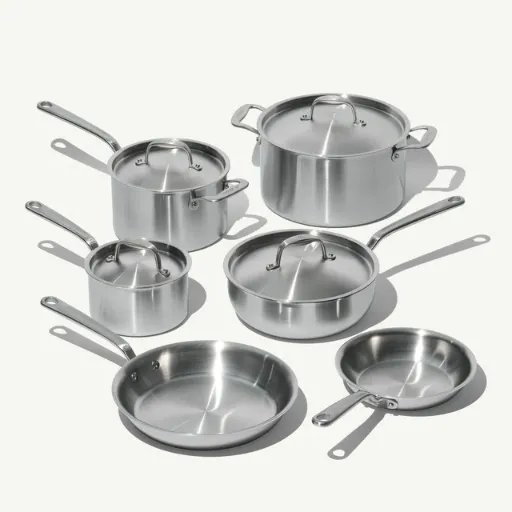
The difference that distinguishes 18/8 stainless steel from the 18/10 one is the amount of nickel in them. Both types of stainless steel have 18% chromium but the 18/10 has 10% nickel while the 8% is in the 18/8. The 18/10, due to the higher nickel content, gains higher resistance to rust and a little bit of brightness which makes it a preference for high-quality cookware and kitchenware.
| Property | 18/8 Stainless Steel | 18/10 Stainless Steel |
|---|---|---|
| Chromium Content | 18% | 18% |
| Nickel Content | 8% | 10% |
| Corrosion Resistance | Excellent | Superior |
| Surface Finish | Bright and shiny | Smoother and shinier |
| Price Range | More economical | Higher due to increased nickel |
| Best Use | Quality cookware, general kitchen use | Premium cookware, professional kitchens |
Construction Material Properties
Among other metals, stainless steel is the most favorable for its ability to tolerate severe conditions and endure the very nature of corrosion, rust, and staining. Steel grades like 18/10 and 18/8 stainless steel are often compared by their slight differences in composition. Studies say that 18/10 stainless steel has a very high corrosion resistance because of its nickel content that helps the material to withstand the acids and wear over time. It is, therefore, not uncommon to find that 18/10 is considered more suitable for the humid areas or the professional kitchens exposed to moisture and chemicals frequently.
Toughness of the material’s tensile strength is another important aspect of durability. Stainless steel’s tensile strength capacity is 485–950 MPa (70,000–137,750 psi) depending on the grade. Thus, it can be used in demanding applications such as industrial machines, construction frameworks, and premium-grade kitchen utensils. For example, Type 304 stainless steel which is normally made up of 18/8 and 18/10 can withstand high-impact usage without losing its shape or cracking; thus it lasts longer even under pressure.
Stainless Steel Applications in Cookware
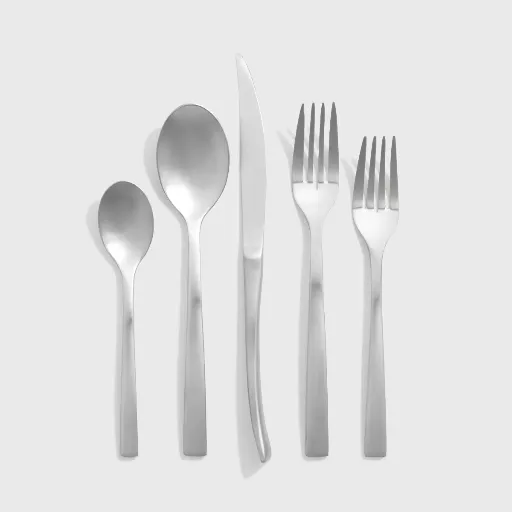
Stainless steel is one of the major materials for cookware due to its sturdiness, anti-corrosiveness, and high-temperature tolerance among other properties. When it is used together with aluminum or copper, it gives perfectly even heat distribution, which is very good for cooking.
18/8 Stainless Steel Cookware
The term 18/8 stainless steel designates a certain type of material commonly used for cookware that consists of 18% chromium and 8% nickel. This combination offers the metal an astonishing resistance to rust, a long life, and a bright, shiny surface. Cookware made of 18/8 stainless steel is neutral when it comes to the taste or quality of the food since it won’t affect them when coming into contact with acidic or alkaline ingredients. The strength of the material allows pots and pans made of it to withstand high heat without warping.
Judging by recent reports, 18/8 stainless steel stands among the most frequently employed materials in the manufacture of first-class cookware because of the great combination of its performance and the long-lasting quality. It produces nice heat distribution when placed with an aluminum or copper core, which is very common in the production of multi-ply cookware. Analysis of the global cookware market confirms that the multi-ply 18/8 stainless steel products constitute a large part of the sales in the premium cookware category because of their durability and usefulness.
18/10 Stainless Steel Cookware
18/10 stainless steel is considered one of the very best materials in cookware due mainly to its longevity, luxury look, and anti-corrosive properties. The term “18/10” refers to its composition, which includes 18% chromium and 10% nickel. The increased nickel content, in comparison to 18/8 stainless steel, not only provides a greater resistance to rust but also gives the product a much smoother and shinier surface.
Recent market reports indicate that cookware made from 18/10 stainless steel is increasingly preferred in the premium cookware collections, especially amongst top-end brands. Its everlasting quality permits an even heat distribution thus the risk of hot spots is reduced and cooking performance is kept constant. Besides, its non-reactive surface makes it perfect for the preparation of acidic foods like tomato sauce or citrus-based dishes since there is no flavor alteration and safety is not compromised.
The Right Material Selection

Expert Recommendation: I usually put 18/10 stainless steel first in the list of materials for cookware. The reason being its durability and the capability to transfer heat evenly throughout the pan. Its non-reactive surface is ideal for cooking all kinds of food, especially acidic ones, as it will not alter the taste or compromise the safety.
What Consumers Look For
When buying cookware or cutlery, consumers are mainly concerned with durability, health safety, and ease of use. For the aforementioned reasons, 18/10 stainless steel has become the most recommended material because of its non-reactive nature, corrosion resistance, and ease of maintenance, which put it in the list of the safest materials for food preparation.
Moreover, the modern cookware cannot be too versatile. The buyers are usually after features like induction stove compatibility, good heat distribution, and ergonomics in design. A survey conducted by Statista in 2023 showed that 72% of consumers consider energy efficiency a major factor in their kitchen product purchases, and this has made the layered designs incorporating 18/10 stainless steel, aluminum, or copper cores even more popular because the latter two materials not only conduct heat well but also use less electricity.
Cost Versus Quality Balancing
It is vital to make the right selection cookware bakery balancing cost and quality. While a premium cookware set made of top-tier materials like 18/10 stainless steel with aluminum or copper cores will usually come with a higher price tag, it is worth the investment due to longevity and excellent cooking performance. As per the recent market trends, the average price of stainless steel cookware of high quality is around $100 to $300 per piece, with complete sets going for a price range of $600 to $1,500 according to brand and features.
The main reason for it is that quality cookware has a long life and thus its high price can be justified. The majority of leading brands provide warranty that lasts for at least 10 years and in some cases a lifetime warrant is also given. This situation is opposite to that of low-priced products which are replaced often because they lose their performance soon or get worn-out. For instance, a non-stick frying pan under $50 price usually has a life span of only 1-2 years for regular use and thus consumers have to bear high long-term costs as compared to the more durable option.
| Price Range | Product Type | Expected Lifespan |
|---|---|---|
| $100 – $300 | Premium individual pieces | 10+ years with proper care |
| $600 – $1,500 | Complete cookware sets | Lifetime warranty (many brands) |
| Under $50 | Non-stick budget options | 1-2 years regular use |
Conclusion
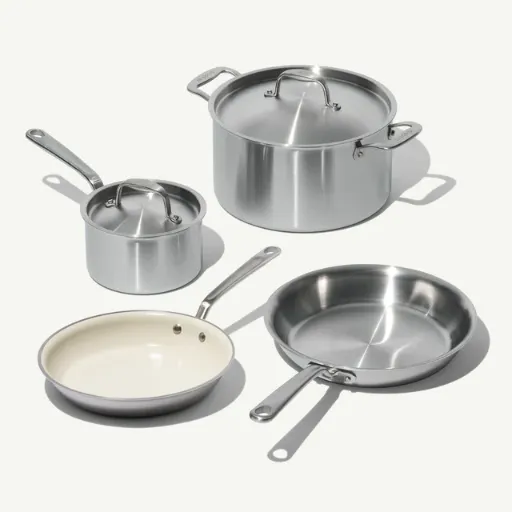
Summary of Key Takeaways
One of the major aspects of choosing cookware is the balance between quality and cost, which is the key point for both the long-term satisfaction and the performance. Premium brands like All-Clad and Le Creuset are the perfect choice for those wanting the highest durability, the most even heat distribution, and the best looking cookware, even if it costs more. On the other hand, Cuisinart and Tramontina are good quality brands that can be found in lower price ranges and are capable of giving excellent performance at a much lower cost.
New research has pointed out that stainless steel is still the most favorable material after all because of its versatility, non-reactive surface and easy maintenance, and thus it still accounts for more than 60% of worldwide cookware sales. Non-stick skillets, which are easy to use, have lost part of their market share because of the users’ concern for the environment and the products being replaced so often. The most recent market trends show a shift towards increasing interest in ceramic cookware, which has been a favorite owing to its being eco-friendly and non-toxic.
Final Thoughts on Stainless Steel Grades
If you are going to buy stainless steel cookware, you need to know the differences between the grades so that a proper decision can be made. The most frequently used grades in stainless steel cookware are 304 and 316. Grade 304 is often called 18/10 stainless steel since it consists of 18% chromium and 10% nickel, and it is highly regarded for its robustness, rust resistance, and low price. Therefore, it is often the leading option among consumers. Conversely, grade 316 or “marine grade” has an extra 2-3% of molybdenum that makes it even more resistant to corrosion, particularly in places where the salt content is very high or the acidity level is high.
In terms of practical application, 316 stainless steel is frequently used in the higher-end cookware lines, especially those that are targeted towards professional chefs or people who want nothing but the best. The research confirms that cookware made of 316 stainless steel may last up to 10 years longer than that of inferior quality when used daily, thus making the initial investment worthy. Plus, stainless steel is a green material since it is 100% recyclable, and so its use helps to save the environment.
♻️ Environmental Note: Stainless steel is 100% recyclable, making it an eco-friendly choice for sustainable cooking.
Reference Sources
-
Crystalia USA Blog
This source explains the differences between 18/10, 18/8, and 18/0 stainless steel, focusing on their durability, corrosion resistance, and suitability for flatware and cookware.
Link to source -
Xometry Resources
This article compares 18/8, 18/10, and 18/0 stainless steels, highlighting their composition, corrosion resistance, and applications in kitchenware and appliances.
Link to source -
MISUMI Blog
This blog post provides an in-depth comparison of stainless steel grades, including their chromium and nickel content, and their impact on rust resistance and durability.
Link to source
Frequently Asked Questions (FAQs)
❓ What are the main distinctions between 18-8 and 18-10 stainless steels?
Primarily the difference between 18-8 and 18-10 stainless steel is in the composition of the chromium and nickel. 18-8 consists of 18% chromium and 8% nickel while 18-10 comprises 18% chromium and 10% nickel. 18-10 steel is more expensive than 18-8 due to adding more nickel, but it has a better corrosion resistance and a shiny surface, being a more definite choice for pot and knife.
❓ In the case of 18-8 steel, does it resist rust?
The answer is yes; 18-8 stainless steel is typically simply regarded as a rust-resistant kind of steel because the element chromium which is present in it, forms a protective layer which not only protects against rust but also allows corrosion. However, one should still be careful that the material will not rust at all since it will slowly corrode if it is in contact with acid or if it undergoes harsh cleaning.
❓ Which kind of metal is the most suitable for cutting tools in the kitchen?
18-10 stainless steel is normally considered to be the most suitable metal for kitchen tools because it has higher nickel content that gives it better resistance to corrosion and durability. It is perfect for cutlery and cookware since it can take a variety of cooking conditions without losing quality.
❓ To what extent does chromium concentration influence corrosion resistance?
Chromium concentration in stainless steels has a big role in deciding their corrosion resistance. The thicker the passive layer, the more the underlying iron is sheltered from rusting. Thus, 18-10 steel with its greater content of chromium and nickel has superior corrosion resistance over 18-8 steel.
❓ Is there any possibility that heat treatment might bring about the changes in the case of stainless steel?
Heat treatment will definitely increase some of the properties of stainless steel but this is most applicable to martensitic stainless steels. It can also make a hard wearing product more durable and less susceptible to wear. On the other hand, austenitic stainless steels, such as 18-8 and 18-10 cannot be subjected to heat treatment, as they will retain their properties through their alloying elements.
❓ What function does the AISI classification of stainless steel play?
AISI grades like those mentioned for 18-8 and 18-10 steels furnish a universal classification system that mirrors the chemical makeup and physical characteristics of the steel. AISI 304 which correlates with 18-8 steel is frequently applied for food processing and kitchenware because of its outstanding corrosion resistance and easy-to-fabrication property.

